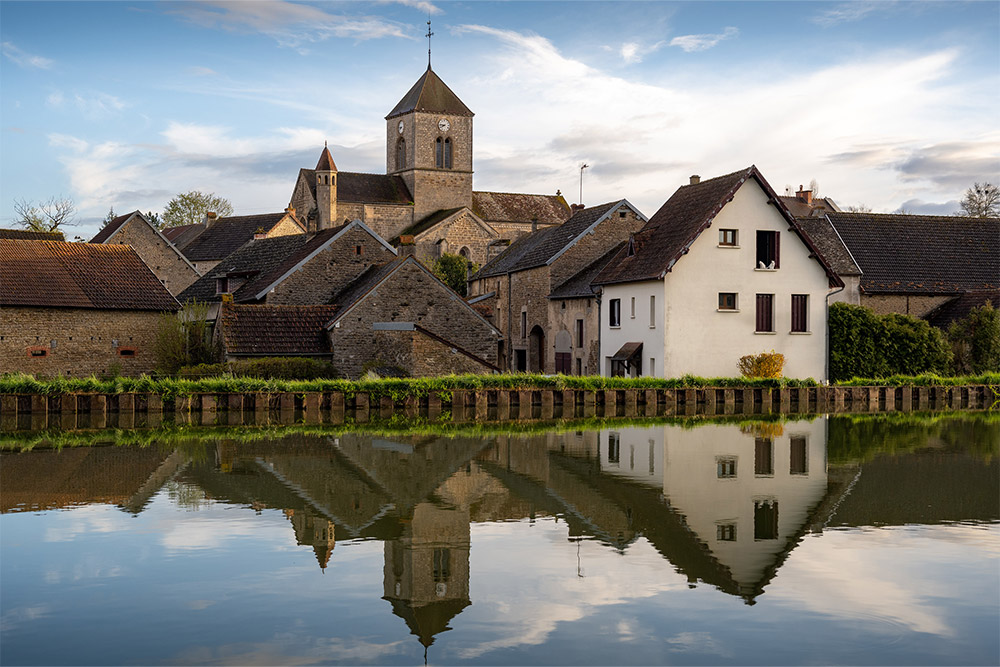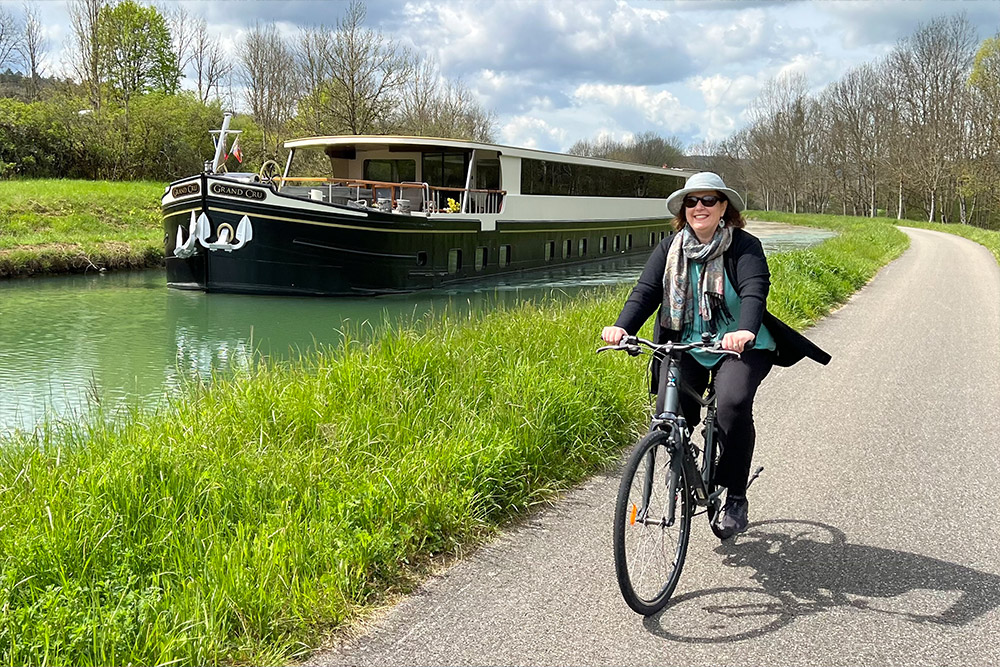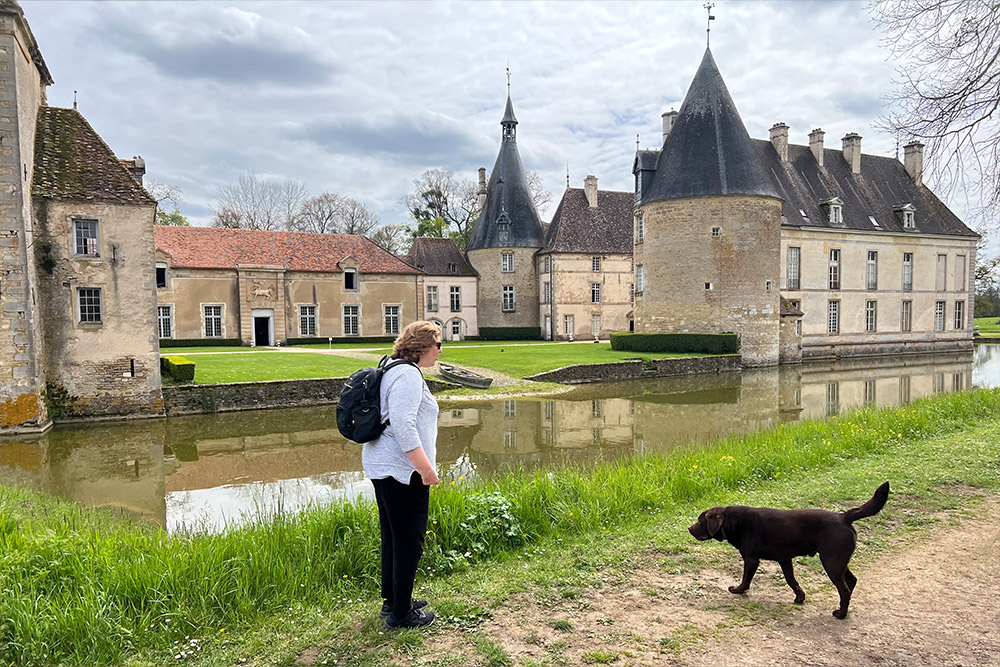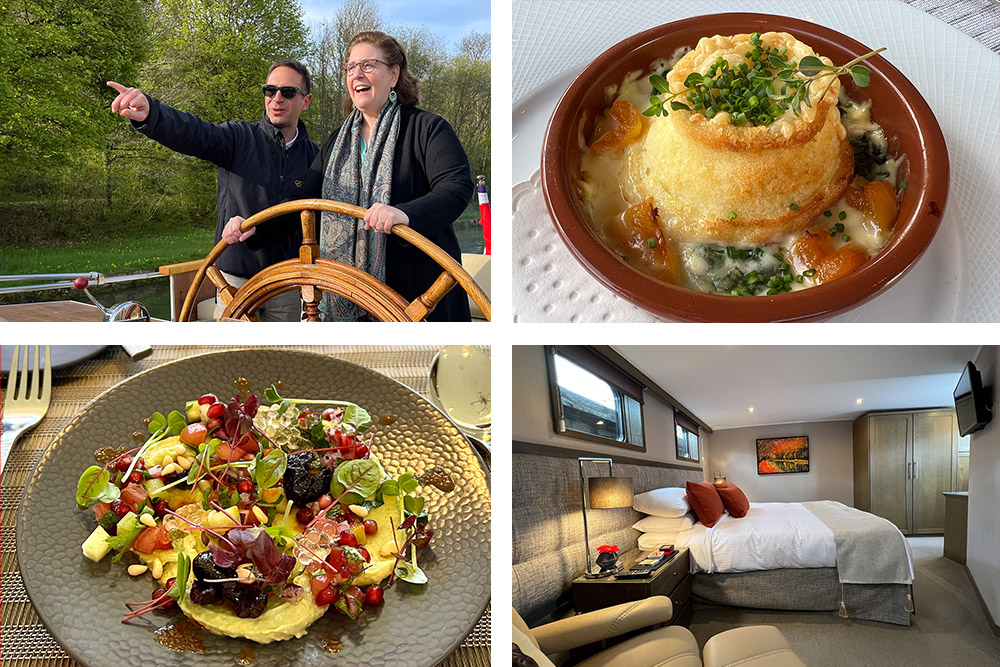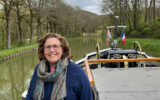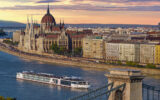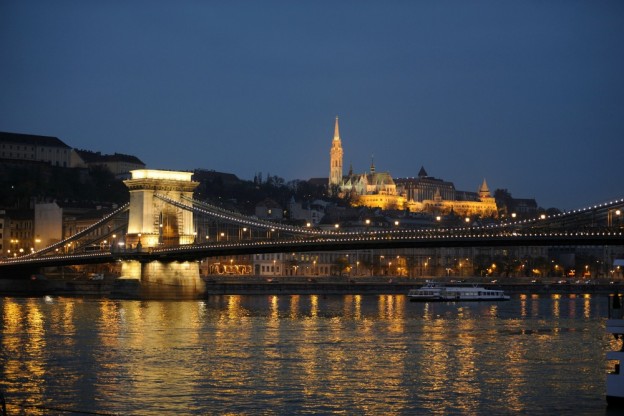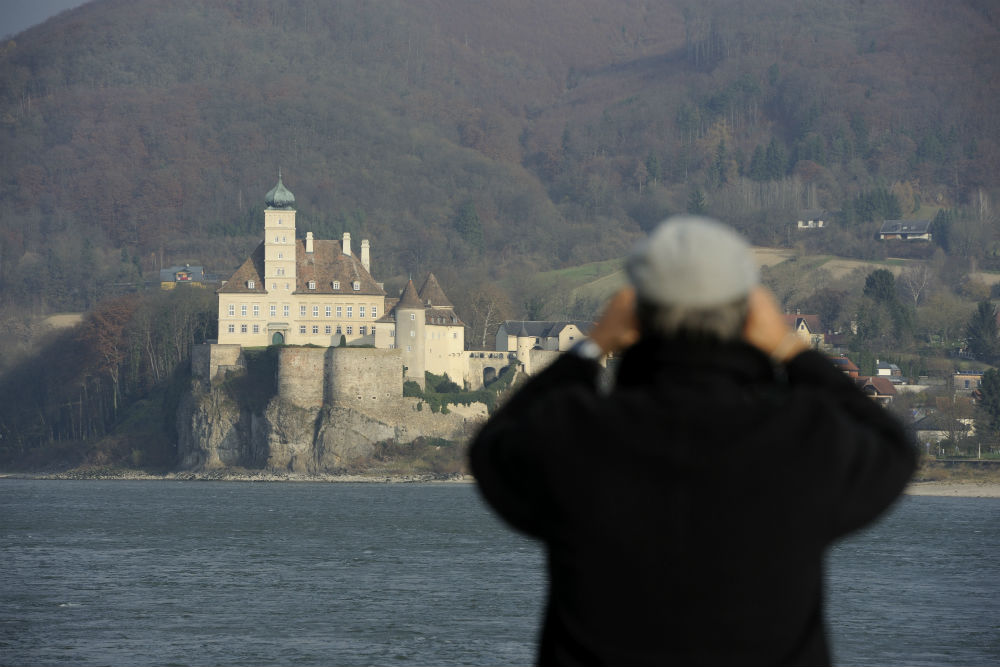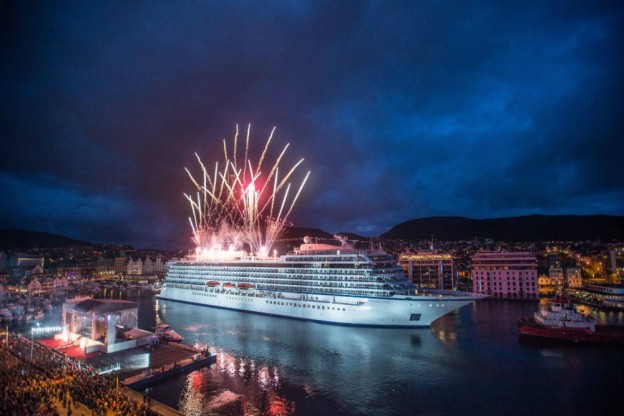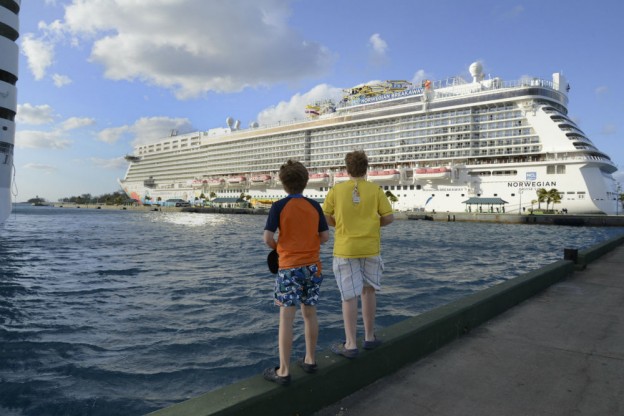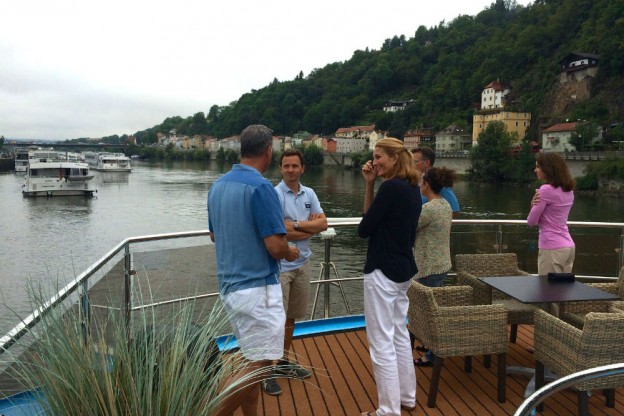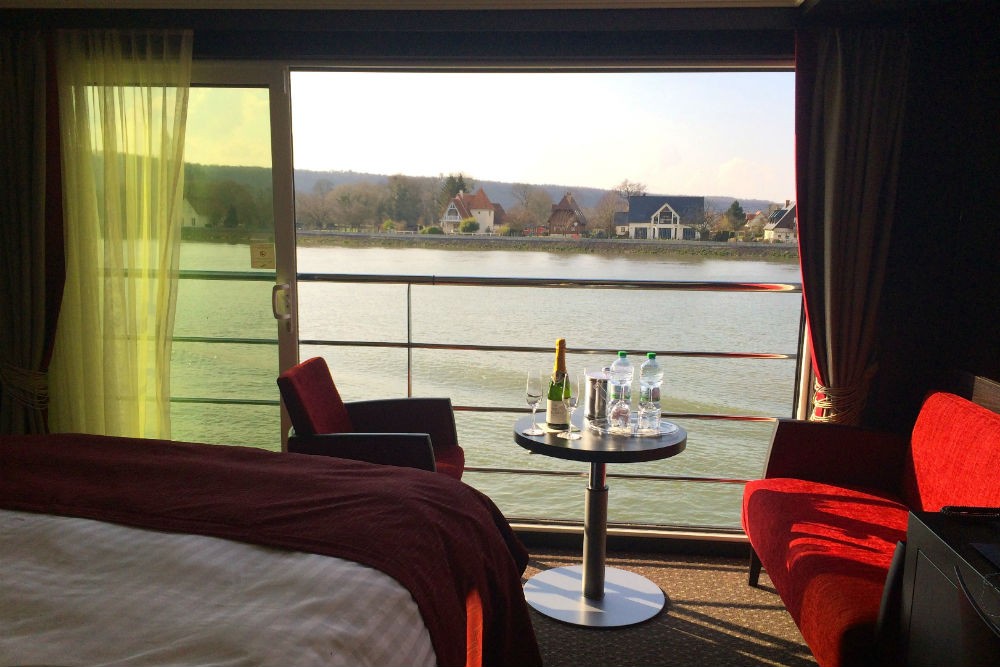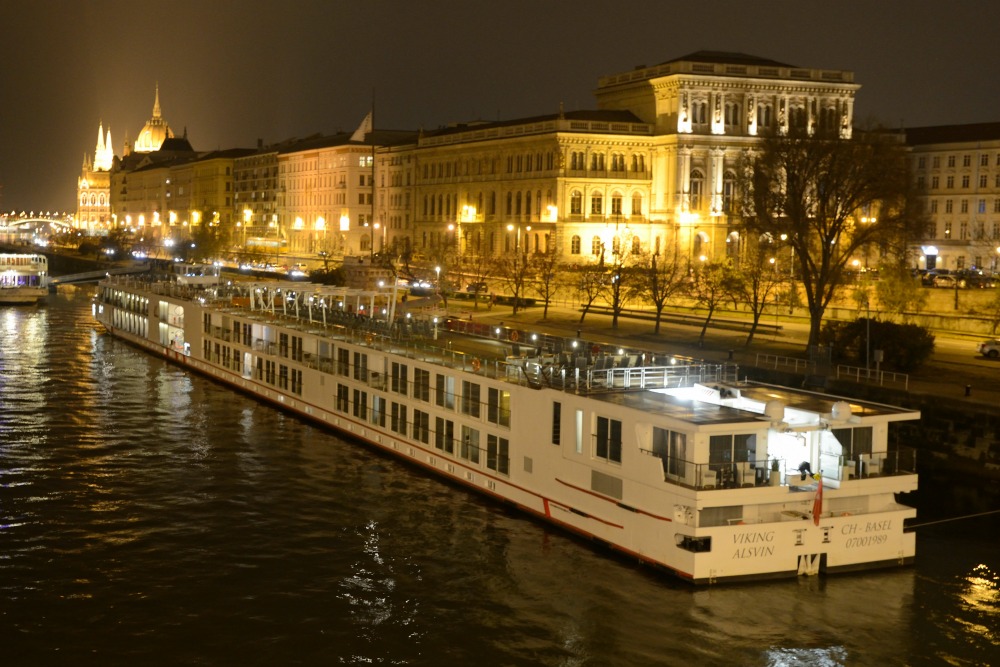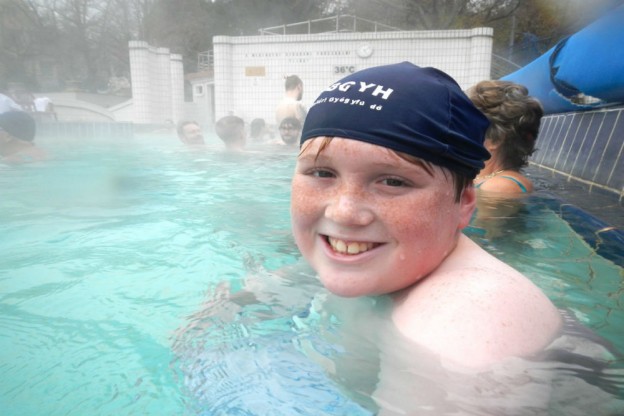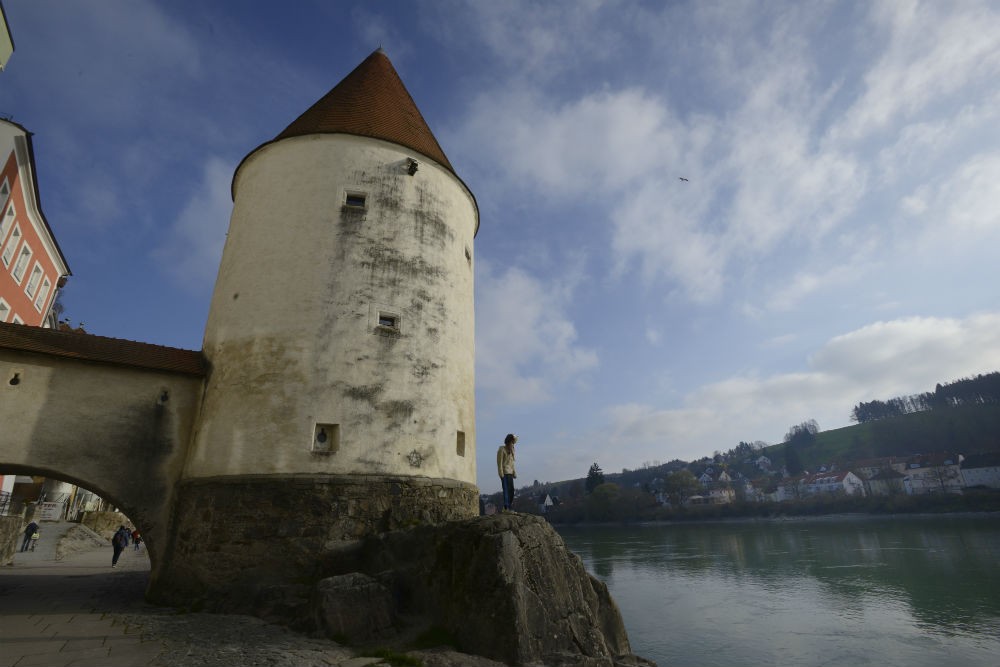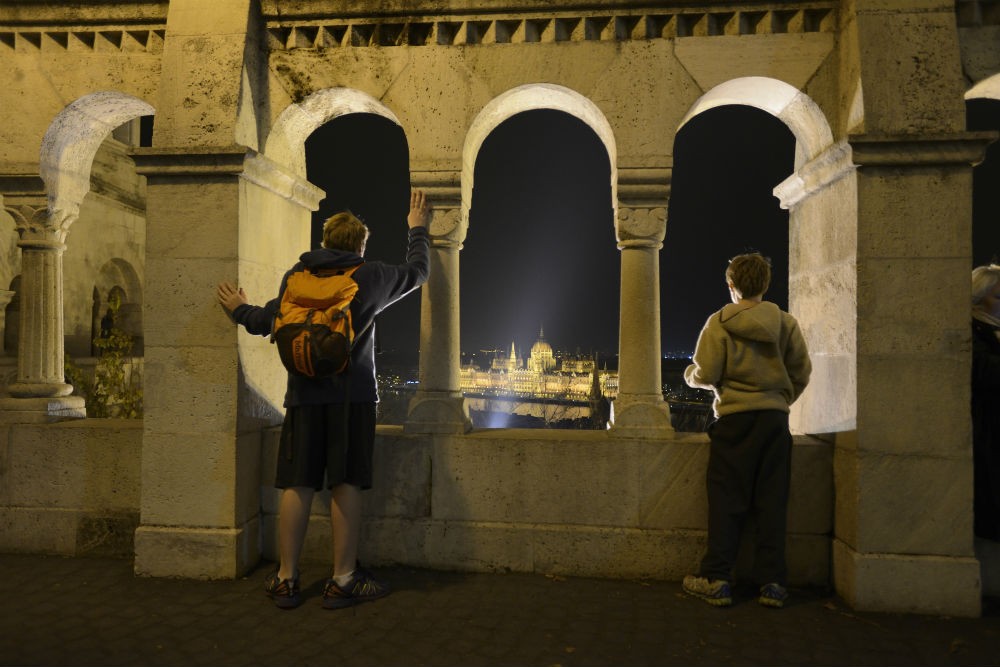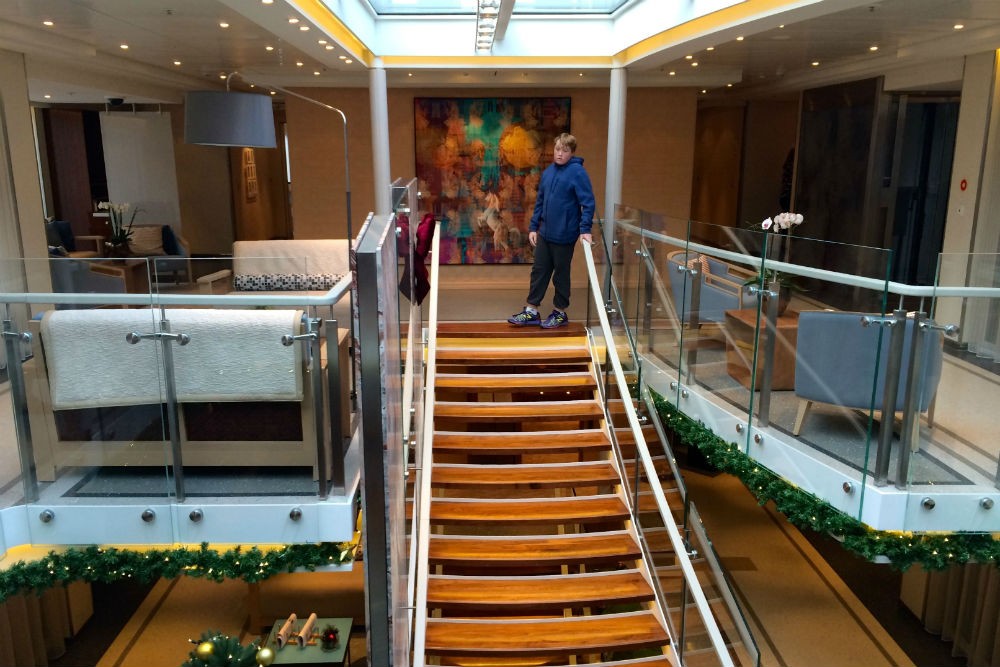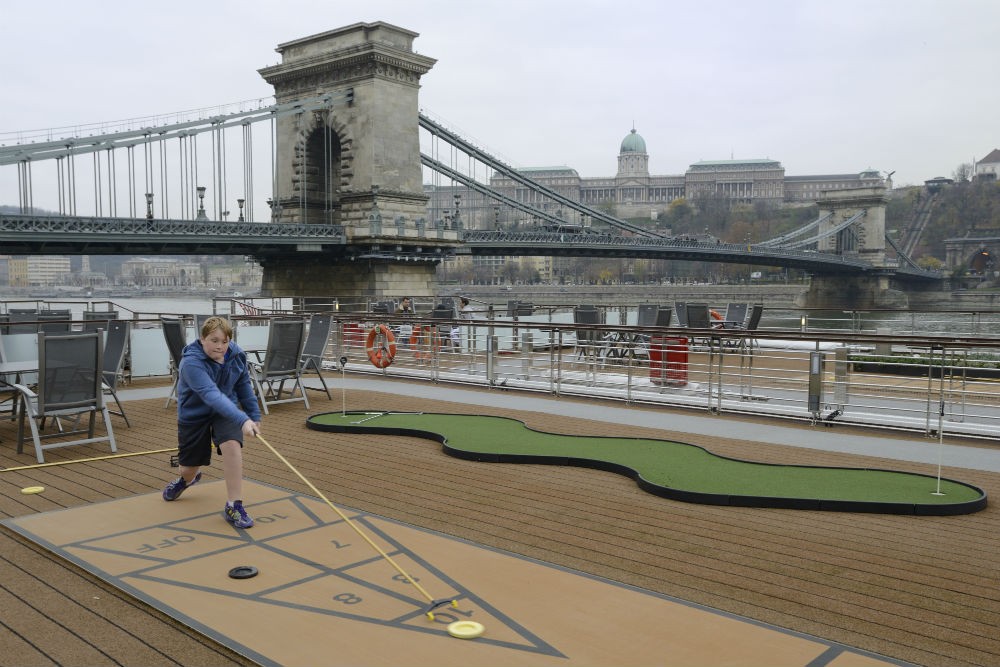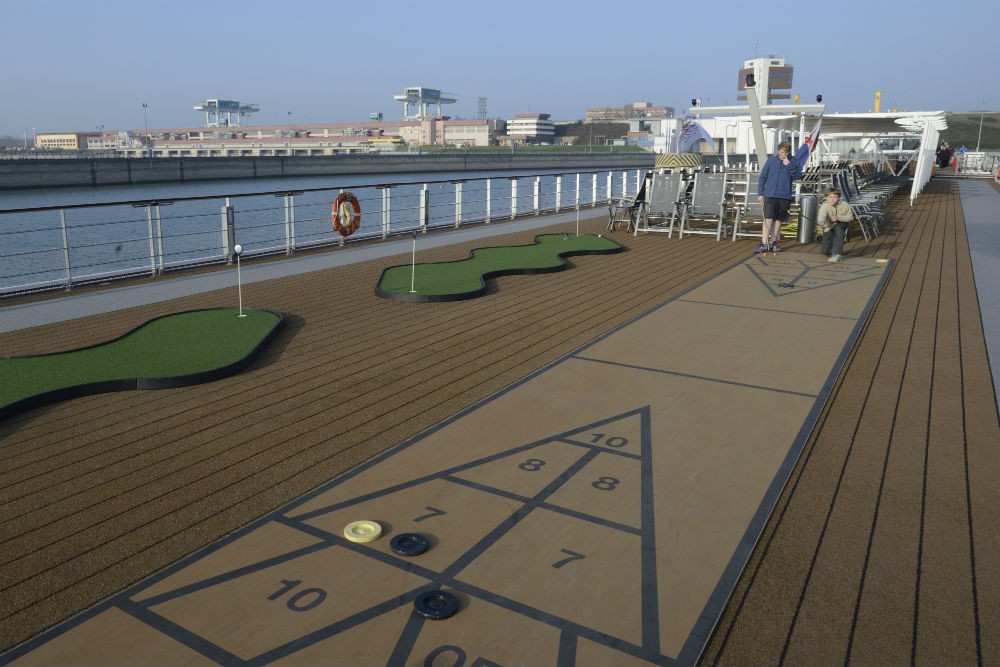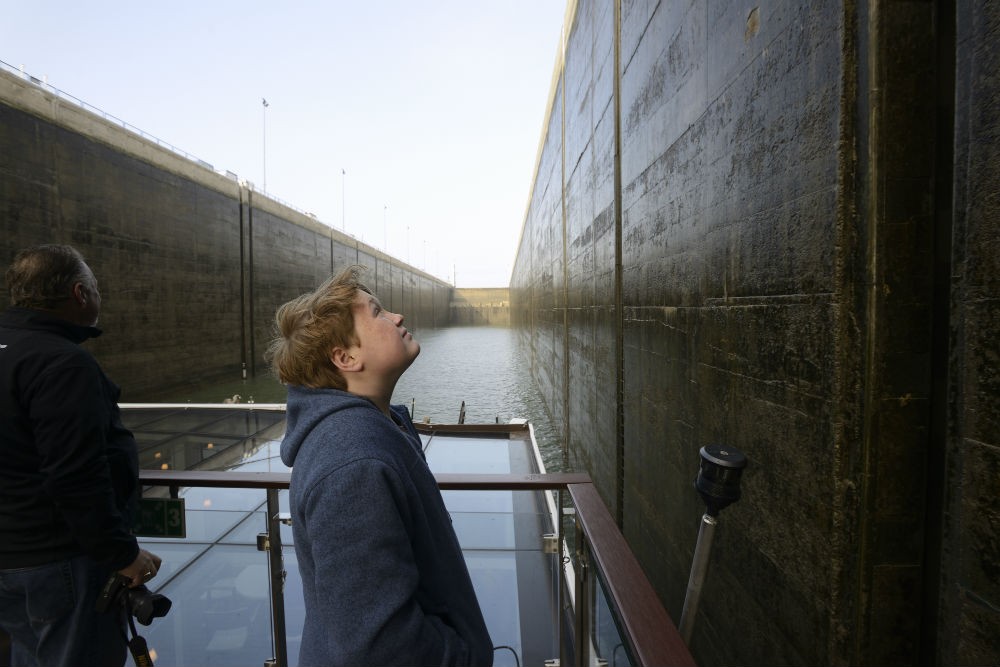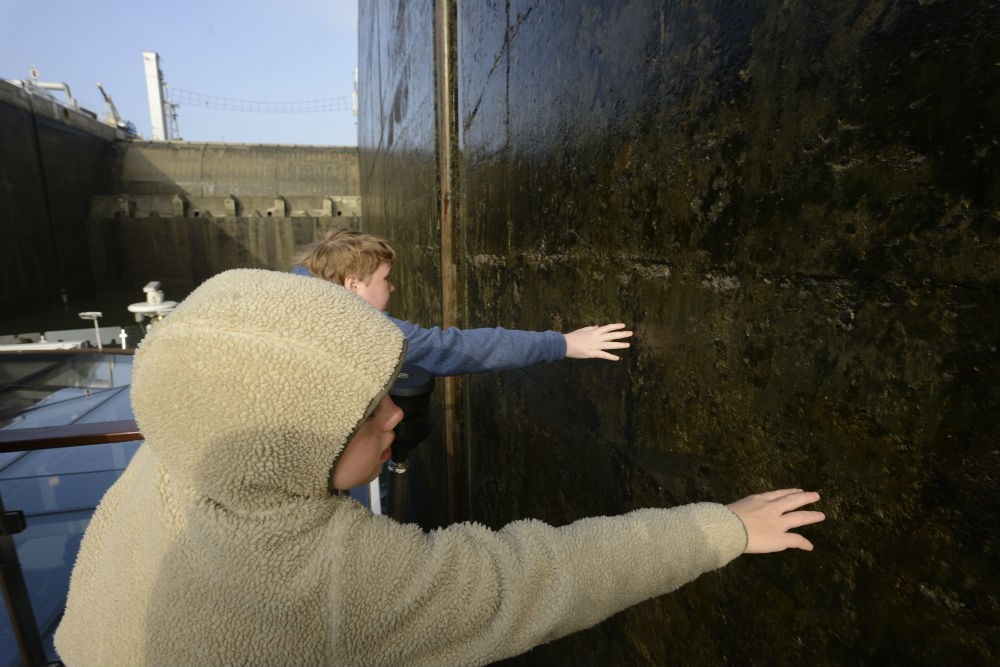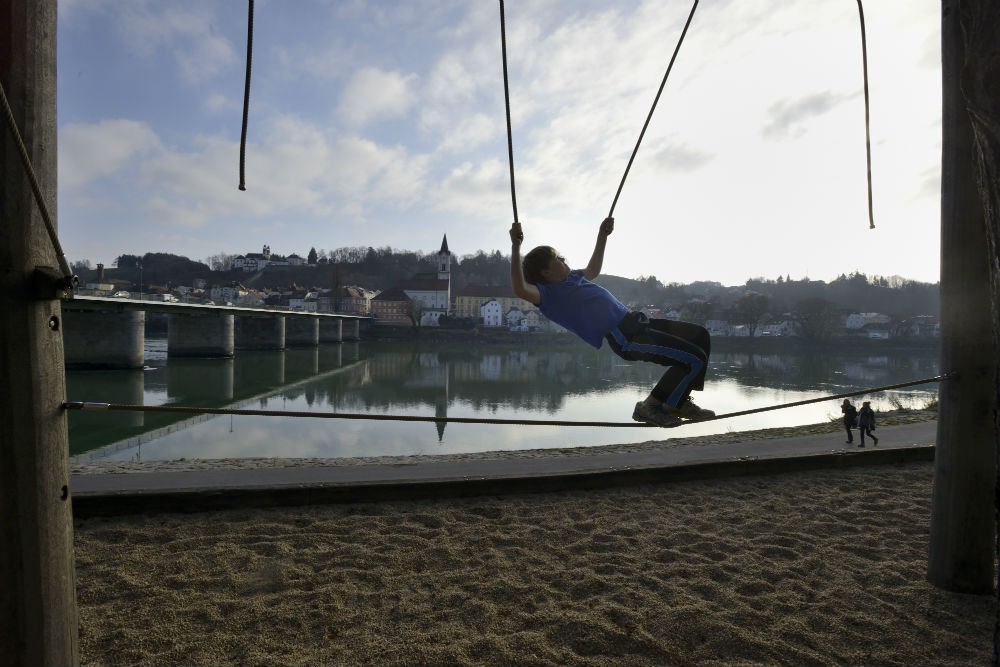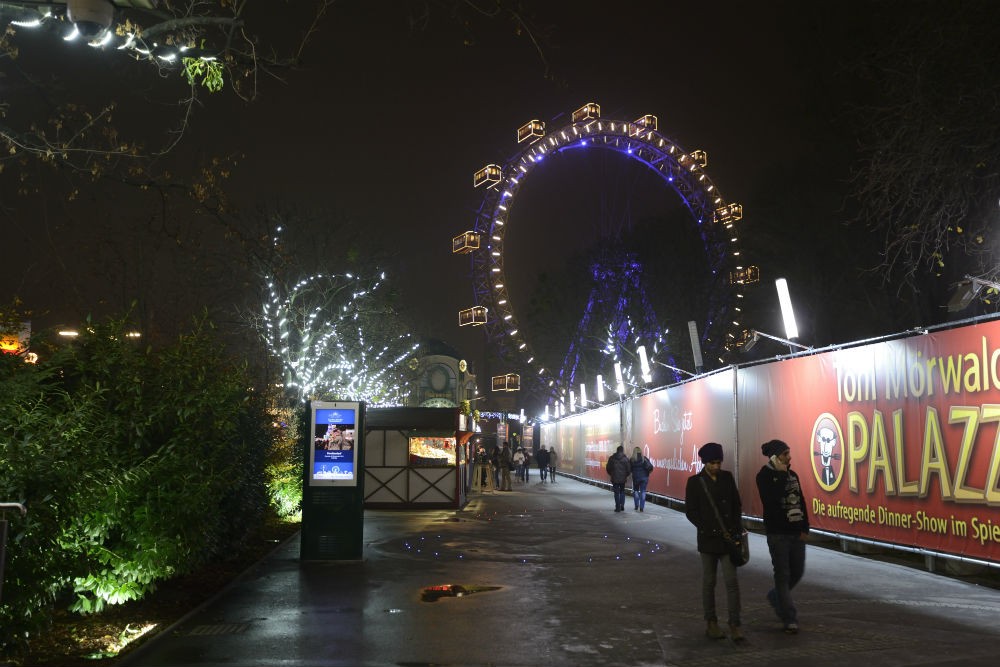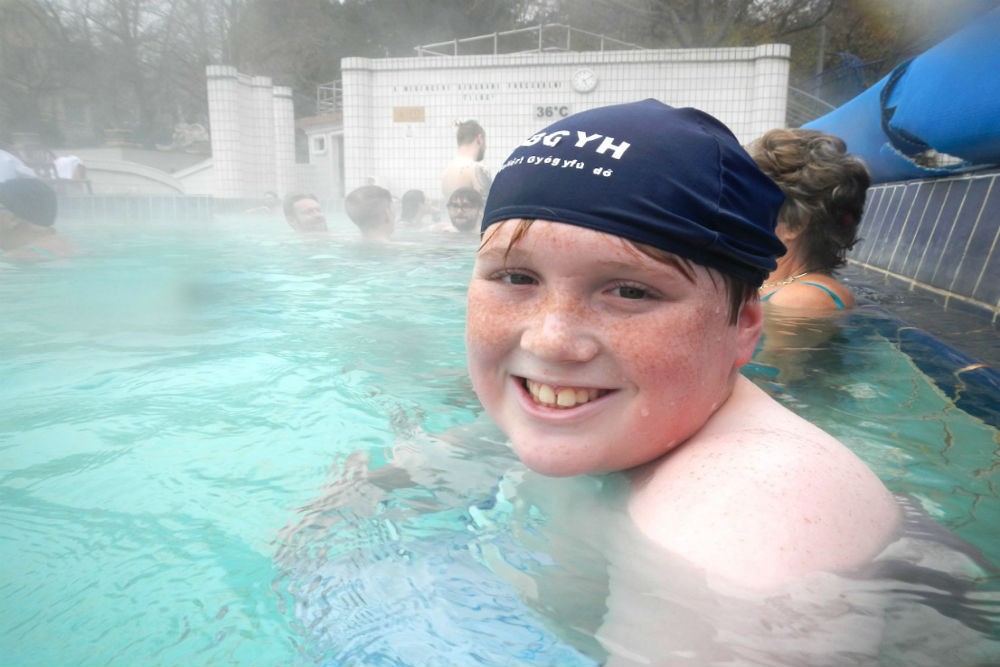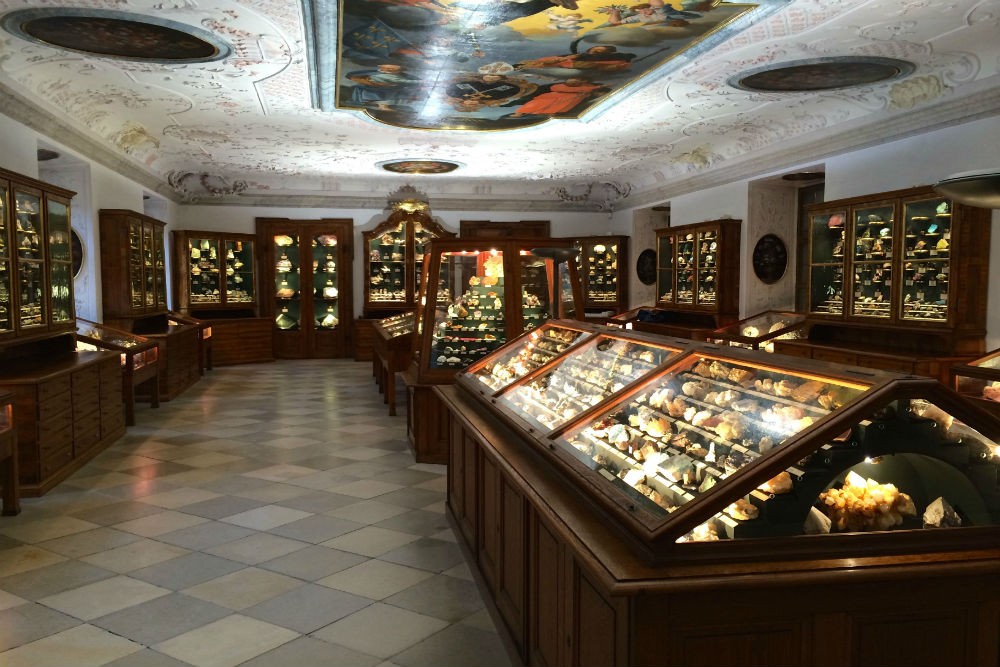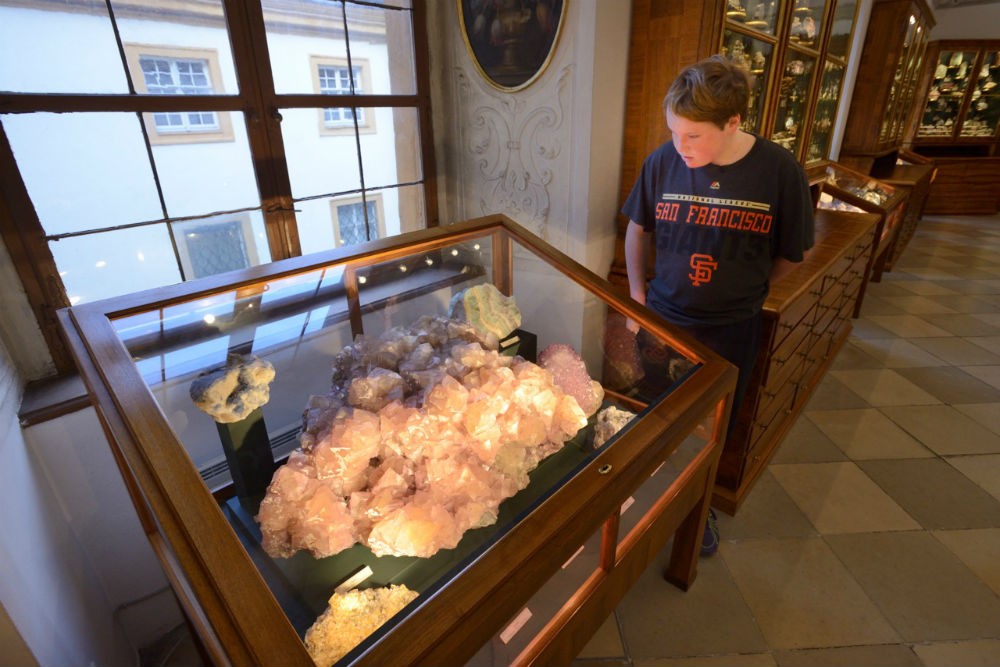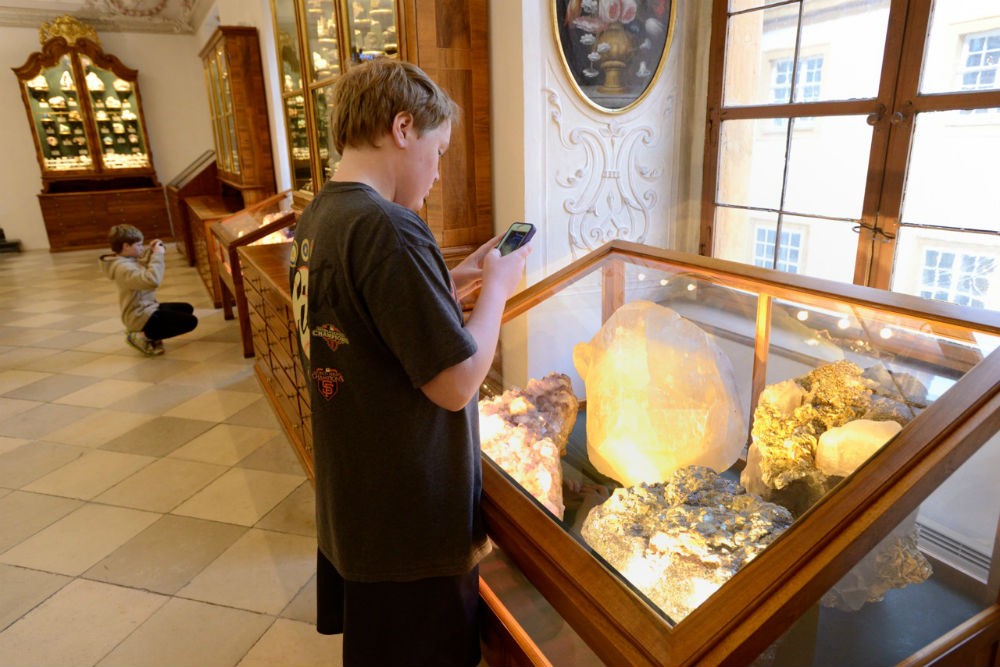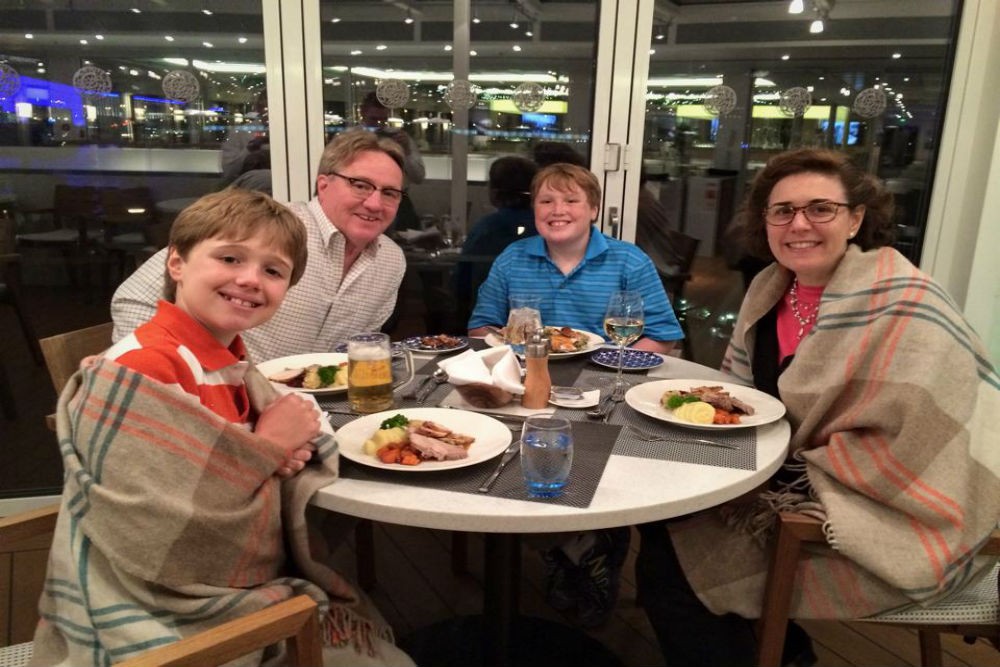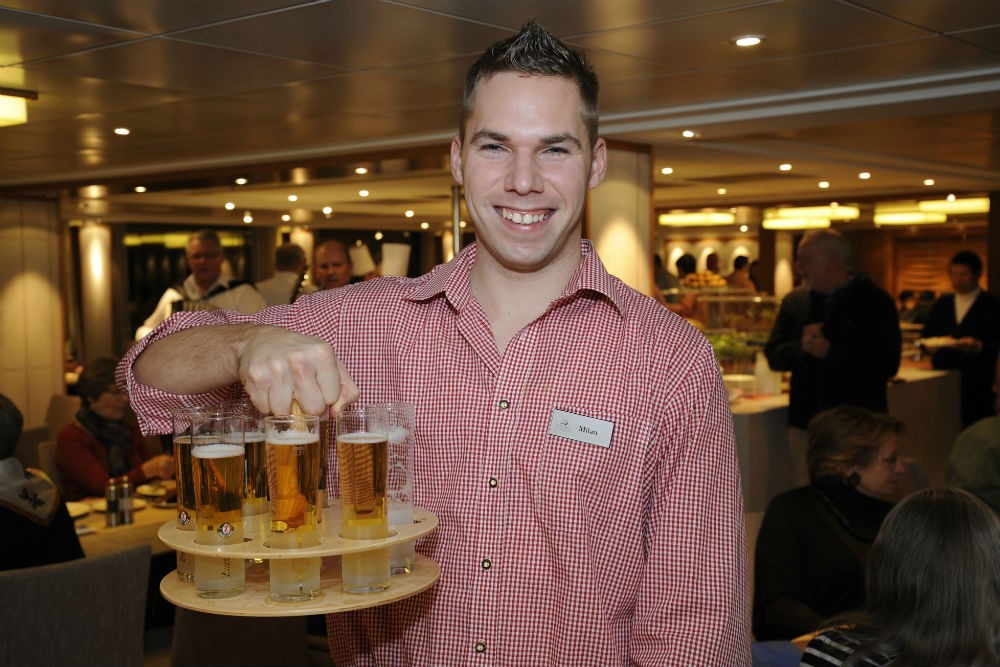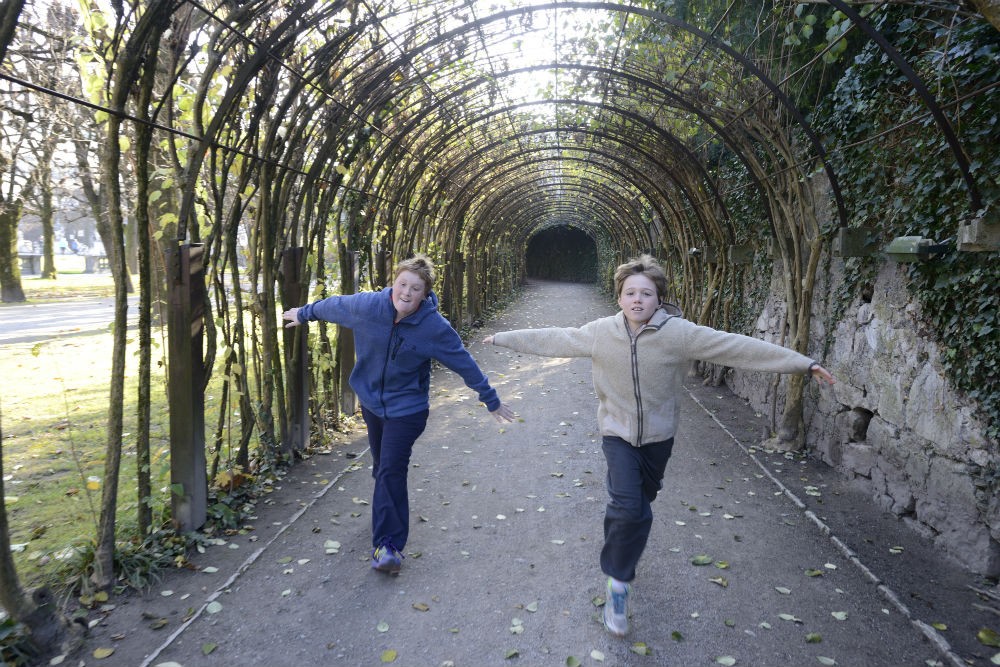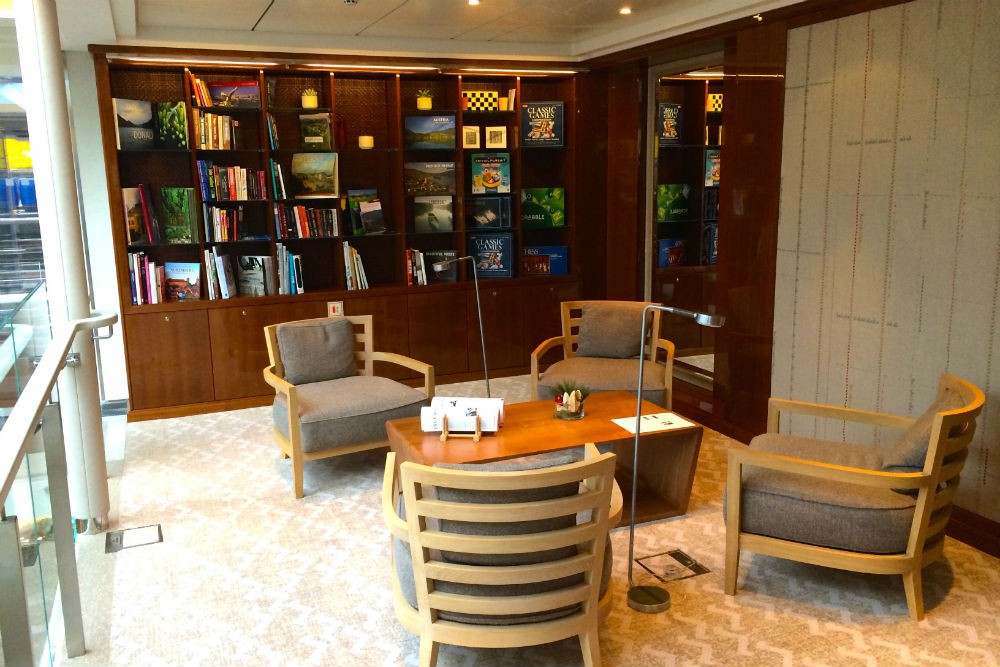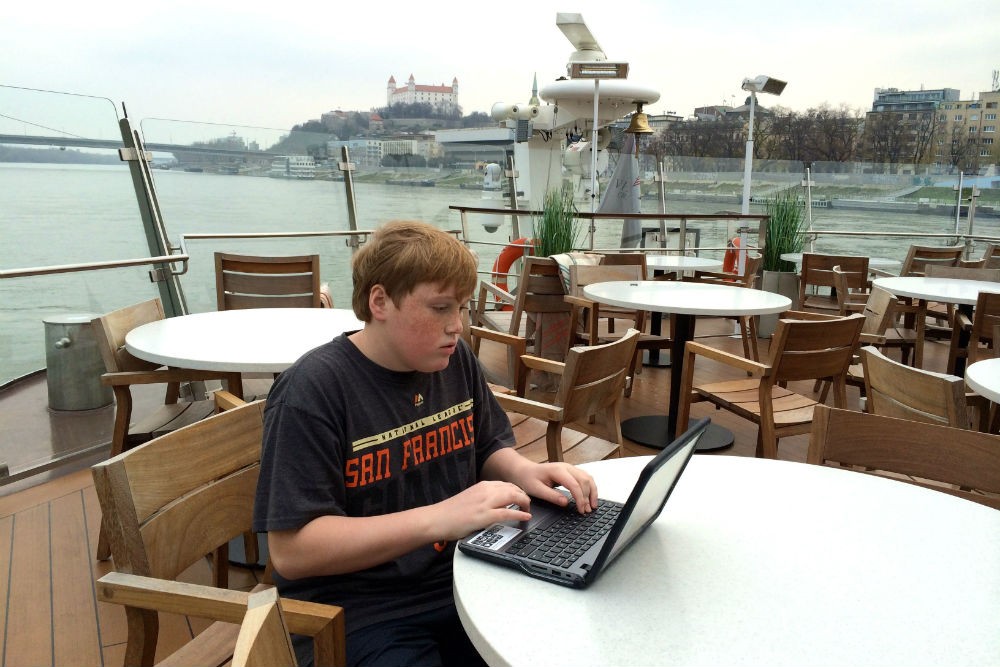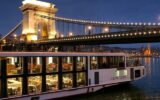Contemplating a river trip in Europe? A river cruise is a scenic and effortless way to travel, for sure, but take heed: Many of the rules that apply when choosing a hotel or a big ocean cruise ship don’t carry over to river boats. To get the best value for your dollar, here are seven things to keep in mind.
Mistake No. 1: Splurging on a balcony
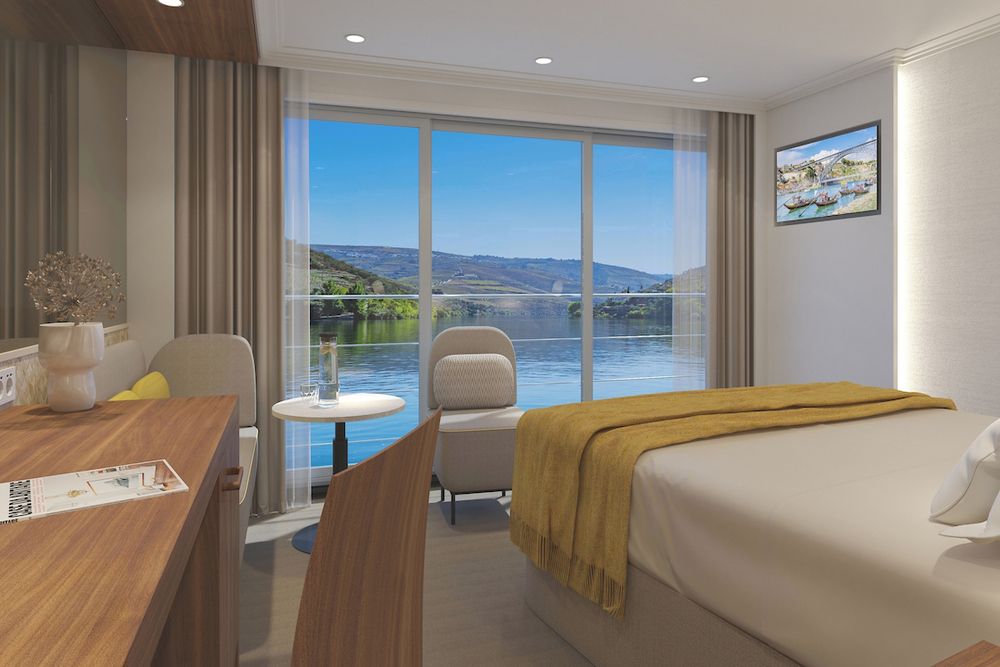
The Panorama Suite on Avalon’s river vessels is one of the nicest afloat. Instead of a small balcony, its French verandah, which extends to the width of the room, makes your whole stateroom feel like a balcony. Photo via Avalon.
You’d probably assume a balcony is critical—for the view, the fresh air, the photo ops, the extra space, the privacy. A balcony is a big plus at a resort and on a huge ocean ship, but on river boats it can actually be a drawback: River ships have a width limit (so that they can fit through locks), which means that cabins can only be so wide, which in turn means that a balcony takes away from your interior room space. If it’s chilly or raining—as it sometimes is—you’ll value the interior room space more than the balcony. Also, a balcony lets you see only one side of a river, whereas elsewhere on the ship you can see both sides at once. And who wants to miss half a river?
This is why many savvy river cruisers opt for a “French balcony” instead of an “outside balcony.” A French balcony is a glass door or wall-to-wall window that opens to give you fresh air and the feel of a veranda, minus the outside floor, tables, and chairs. The best such pseudo-balcony I’ve seen is on Avalon Waterways’ newer ships. The outside wall of the cabin is floor-to-ceiling glass that stretches 11 feet wide and slides open 7 feet wide. Basically, it turns your whole room into a veranda.
Avalon calls these cabins “Panorama Suites.” Technically, they’re not actually suites: Each is one room that measures 200 square feet and has a comfy sitting area (a chair, a loveseat, and a table) overlooking the water. The bed faces the view—a bed position that is unusual for river ships and is a nice touch, as the view is the first thing you see when you wake in the morning (unless you’ve drawn the curtains, you’re in a lock, or another ship is parked alongside you—which is a reason why most people do draw their curtains at night).
With cabins that transform into open-air terraces, who needs a balcony?
Mistake No. 2: Assuming that your whole itinerary is on the river
The beauty of a river cruise is that it’s a picturesque and easy way to see towns and cities along a river. Typically, the ship drops you off in town, and you can choose to walk around and explore on your own (always my preference) or take a walking tour or bus tour with a group from the ship. Sometimes passengers are bussed to sights an hour or two (or more) away from the river. And sometimes those bus tours can mean missing whole stretches of the river. On the Seine, for instance, opting for the bus tour to Honfleur or Normandy’s WW2 landing beaches could mean missing a picturesque stretch of the river because the bus picks you up at one port and drops you off at the next. (Which is why, on one cruise, I opted not to go to Honfleur or the landing beaches.)
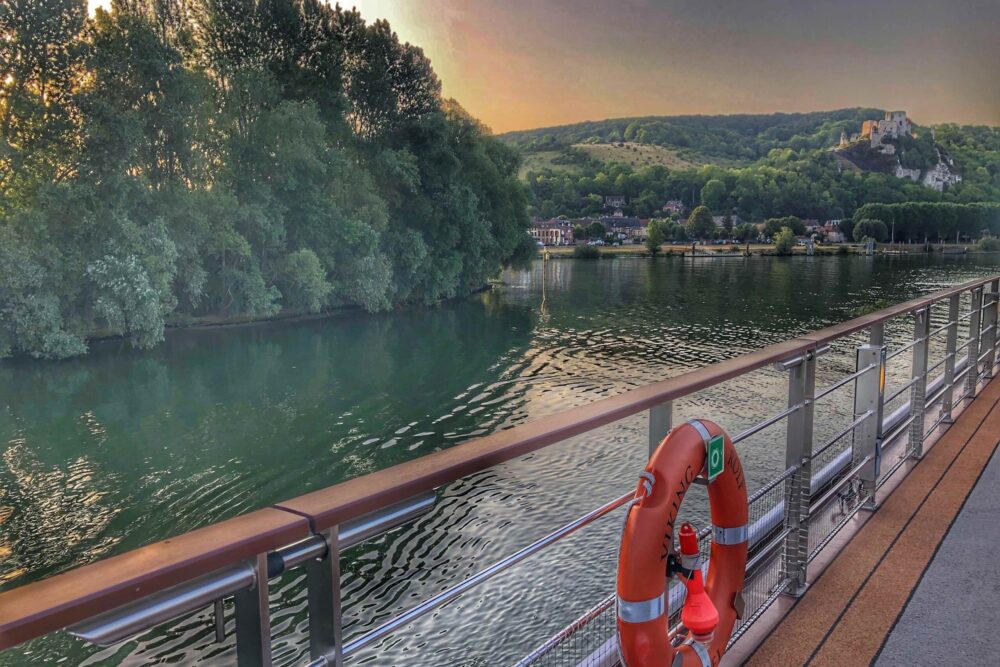
One of the most scenic spots on the Seine River is the approach to the village of Les Andelys. Photo by Carolyn Spencer Brown
So find out whether the cruise line and itinerary you’re considering may force you to choose between the river itself and the sights away from it—and whether those stretches of river are not-to-be-missed picturesque or okay-to-miss industrial. A good cruise director will answer these questions honestly and accurately, and Google Earth can help too. If the cruise director can’t tell you which stretches of the river are most interesting, do what I do—even though technically it’s not allowed: Knock on the wheelhouse door, make friends with the captain, and ask them (at a moment when they’re not busy steering around barges or into locks). Captains always know.
Don’t bother spending precious time attempting to find out where your ship will dock in each town. We choose hotels for their location, of course—so it’s understandable that you’d want to know where a ship will be situated—but, for the most part, they all dock in the same spot. Some ships might have better real estate in certain cities. In Budapest, for instance, Viking’s spot is right under the Chain Bridge. As a general rule, though, all the ships park in pretty much the same area—and, to some degree, where they park can’t be known far ahead anyway. In Passau aboard Viking, we docked in one spot and then later the ship moved several slips downriver.
Mistake No. 3: Insisting that your ship have a gym and a pool
I want these in a hotel or on a giant cruise ship as much as the next person, but the fact is, on river ships, you rarely see anyone in the gym (which is tiny and only minimally equipped) or the pool (which is equally tiny except on some Uniworld ships that have gorgeous indoor pools and some AmaWaterways ships that have a relatively spacious pool with a swim-up bar). There just isn’t enough time to use the gym or pool, as you’re off the ship exploring all day. And if you’re not off the ship, chances are either it’s nighttime or you’re gliding down a significant stretch of river that you won’t want to miss.
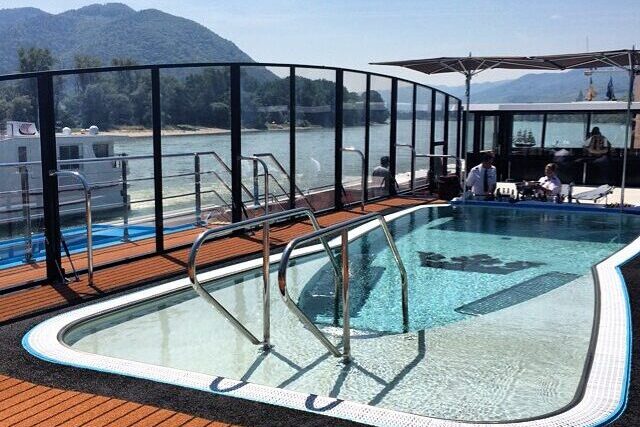
AmaWaterways is one of the few river lines that have pools on the top decks of its ships. Photo by Wendy Perrin
Cruise-line execs keep gyms and pools on ships as marketing tools to get travelers to choose their ship, but the reality is that you likely won’t end up using either. That’s because there are so many opportunities to get exercise off the ship: Some lines carry bicycles and offer cycling tours. Others lend out Nordic walking sticks for ambitious strolling and hiking. And check with your ship’s cruise manager; oftentimes they’ll know where in port you can go to swim or get a massage at a resort or day spa.
Mistake No. 4: Choosing a ship based on the number of passengers
Most people I know, when choosing a hotel or an oceangoing cruise ship, veer away from anything too huge. But on Europe’s rivers there are pretty much only two sizes of cruise ship: 110-meter vessels (which hold about 128 passengers each) and 135-meter vessels (which hold about 166 passengers each). Viking’s longships squeeze 190 passengers onto a 135-meter ship, which competing cruise lines say make it feel crowded. Honestly, though, I sailed on a 190-passenger Viking ship and, other than chairs spaced close together in the observation lounge and trouble finding seats for my party of four at dinner one night, the ship didn’t feel crowded to me. (Then again, I grew up in Manhattan, so my definition of “crowded” may differ from yours.) Nor did I experience less personal service on Viking, partly because Viking (unlike other river cruise lines) has a dedicated concierge who provides such service.
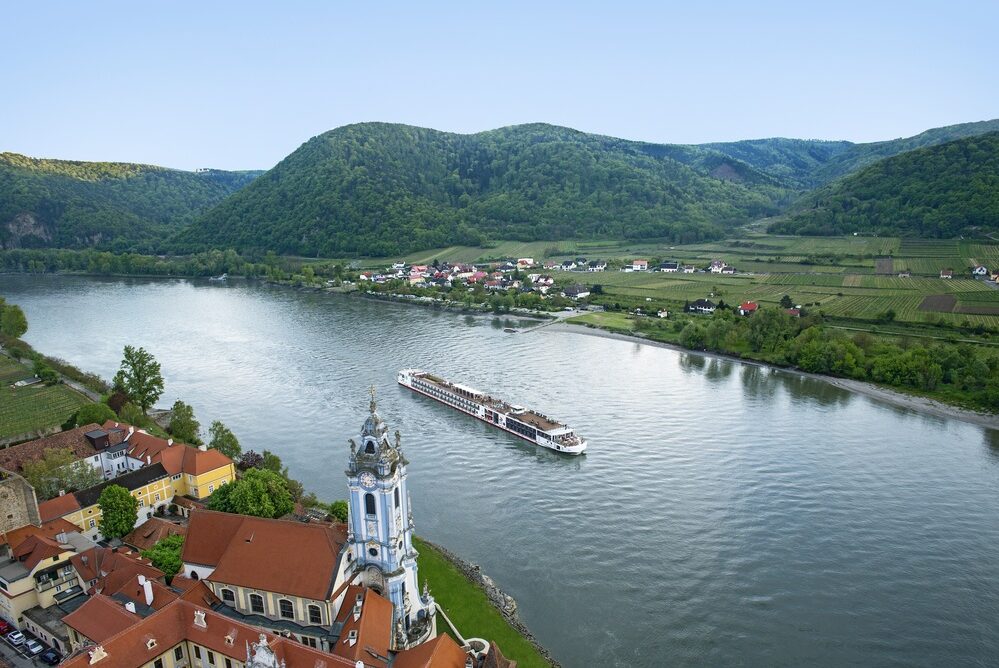
Most ships that ply the Danube and Rhine are similarly laid out (with a few exceptions), so choose your cruise based on the destinations, not the ship itself. Photo via Viking .
There is an exception to this rule. AmaWaterways designed its AmaMagna, which debuted in 2019, to be almost double the width of the standard riverboat on the Danube. The plus? It’s got more amenities, such as more spacious suites, four different restaurants, a sundeck pool and whirlpool, a juice bar, two massage rooms as part of a zen wellness studio and, new this year, a pickleball court. The minus? This ship, due to its size, is limited to a stretch of ports along the Danube that don’t involve locks. Still, it can travel from Germany through Austria, Slovakia, Hungary and Romania, so the options aren’t severely limited.
If I were you, instead of choosing among river ships based on the number of passengers, I’d choose based on factors that I think will affect your trip more—namely, itinerary, river landscape, cabin type, and like-minded fellow passengers.
Mistake No. 5: Booking the least expensive cabin
In a hotel it can make sense: Choose the lowest-category room at a fabulous property, so you can take advantage of everything the hotel offers, and use the room just for sleeping. On a river cruise, though, the least expensive cabin can be really tight—170 square feet or less—with small windows that don’t open. It’s usually worth the several hundred dollars more to get a French balcony. The aforementioned Avalon “Panorama Suite” cabins cost about $100 more per person per day than the ship’s lowest-category rooms. They’re worth it.
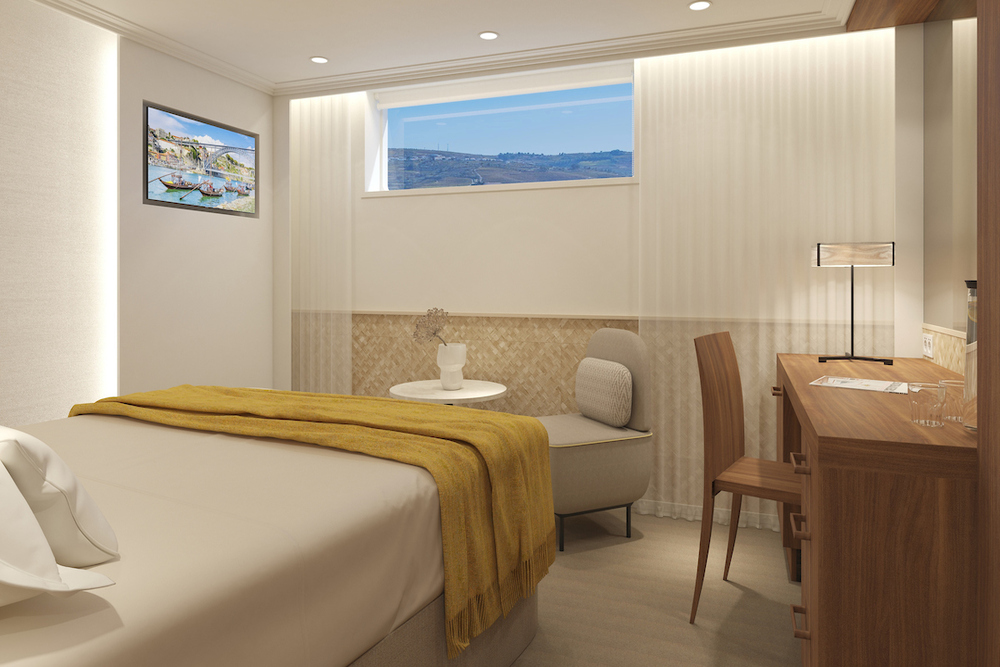
On river vessels, the cheapest staterooms are on the lowest deck and though they have windows, there’s not much of a view (this one is on an Avalon riverboat).
Mistake No. 6: Assuming you can dine on your own
In a hotel or on a megaship, it’s easy to stick to yourselves, but on a river ship, there’s a lot of forced socializing. Every night there’s a four-course (at least), two-hour (at least) dinner where you’re seated at tables with other passengers, some of whom you just met. I’ve made some great friends at these chance meetings, but I’ve also been stuck with some louts. Viking is the only river line I have traveled on that provides an alternative venue where you can grab a half-hour dinner on your own if you just don’t feel like making chit-chat with strangers.
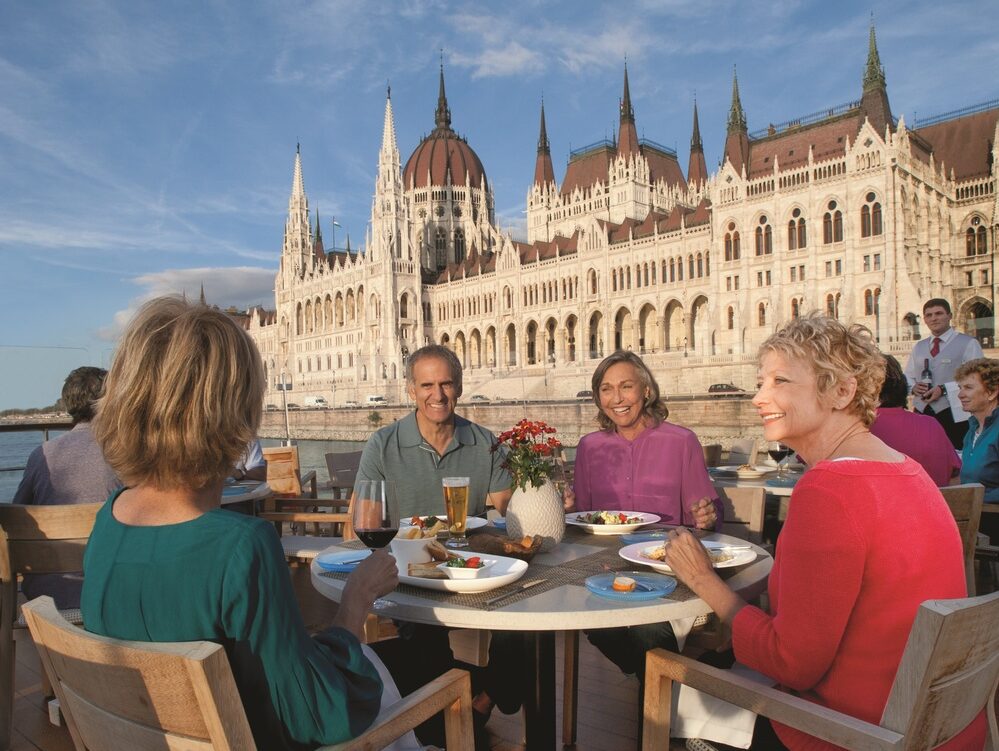
Viking’s Aquavit Terrace offers a casual dining alternative to its main restaurants. Photo via Viking.
AmaWaterways offers some options—typically a light breakfast or lunch option is available to grab and go from its lounges. And its new ship, AmaMagna, which is twice the size of traditional river boats, offers more dining options than any other vessel on the Danube.
Mistake No. 7: Assuming there’s room service
Room service is a given in hotels, and it’s usually free on ocean cruise ships, but on river ships it barely exists. On certain ships, in certain cabins, you can get a room-service breakfast. Avalon offers a complimentary continental breakfast option. Room service for lunch or dinner is rare, but Avalon does offer (again, complimentary) an option based on the day’s menus. You do have to order from the front desk, but the food will arrive at your stateroom.
On most ships, early morning coffee and continental breakfast are available in the observation lounge starting at about 6 a.m.
Don’t expect to find an in-room coffee machine in most river-ship cabins. You really don’t need one, though: Every vessel I’ve sailed on has a fancy coffee machine mid-ship (either off the lobby or in the observation lounge) that whips up espressos, cappuccinos, and machiattos, plus there’s hot chocolate, an assortment of teas, and snacks such as cookies and fruit. In fact, on the Avalon Tapestry II, there are two such coffee set-ups—one in the front lounge, one in the back lounge. Which means coffee is never more than 15 seconds away.
Finally, one mistake you are too smart to make: Assuming the Wi-Fi will work at all times
The good news: The Wi-Fi on river ships is free. The bad news: It comes and goes, depending on whether you’re in a lock or on a remote stretch of the river or the other passengers are sucking up all the bandwidth. Where you’ll have Wi-Fi and where you won’t is unpredictable—and none of the river lines are better or worse at providing it—so just know that, generally speaking, your best windows of connectivity are when you’re not in a lock and other passengers are off the ship or have gone to sleep. Know that coffee shops in towns along the way offer better and free Wi-Fi. Another option is to bring a portable modem that connects with systems on land. You can also pre-purchase international packages via your Wi-Fi provider that enable you to use your phone as a modem.
Also know that nobody requires more frequent Wi-Fi than I do, and a river ship is actually one of the best working environments I know: You can sit at your laptop for hours yet have an ever-changing view.
START PLANNING A RIVER CRUISE
This article was updated and fact-checked in March 2023. It was originally published in 2015.
Be a smarter traveler: Sign up for Wendy’s weekly newsletter to stay in the know. Read real travelers’ reviews, then use the black CONTACT buttons on Wendy’s WOW List to reach out to the right local fixer for your trip.
